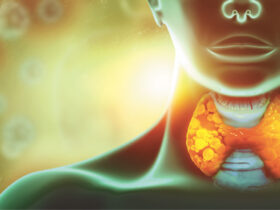Ignorance kills.
When it comes to heart disease in women, lack of awareness – of both risk factors and prevention – is a major contributor to an alarming statistic: Every minute, another woman dies from heart disease in the United States.
“Women must make time to take care of themselves, to learn their heart health numbers and take the right steps to ensure that they don’t fall victim to the No. 1 killer of women in the United States,” said Kristin C. Roussillon, M.D., an interventional cardiologist with Gulf Coast Medical Group and the Heart & Vascular Center of Venice. Dr. Roussillon performs cardiac procedures at Venice Regional Bayfront Health.
“Women are often in the caretaker role and focus so much on others that they ignore their own symptoms, risk factors and prevention,” she said.
Coronary artery disease and cardiovascular disease are by far the greatest health risks for women, Dr. Roussillon said. The American Heart Association publishes reams of statistics on the topic, including:
• Roughly 401,000 women die each year from cardiovascular disease, compared to 386,000 men.
• 176,255 women die each year from coronary artery disease, compared to 39,520 from breast cancer.
• Cardiovascular disease is the No. 1 cause of death in women over age 25.
• In Florida, heart disease kills one in four women.
“Even with these dire warnings, many women are not aware of their risk factors,” Dr. Roussillon said. Risk factors can be divided into controllable and uncontrollable categories. Examples of controllable risk factors include high cholesterol, high blood pressure, physical inactivity, obesity and overweight, diabetes and smoking. Uncontrollable factors include increasing age (over 55), heredity (family history), menopause, autoimmune disorders and race (African-Americans are at particularly high risk).
Diabetes, smoking, stress and excessive alcohol intake can also amplify your risk. Diabetics are two to four times more likely to develop cardiovascular disease.
Smoking is associated with half of all coronary events in women, and women are six times more likely to have a heart attack if they smoke.
Stress can predispose to high blood pressure and can interfere with the way that blood clots. Excessive alcohol intake can lead to obesity, high blood pressure and heart failure.
“Multiple risk factors increase your overall risk exponentially,” Dr. Roussillon said. “One risk factor doubles your risk; two quadruple your risk; three or more can increase your risk more than tenfold!”
It is important to be honest with your physician about lifestyle-related risk factors, and know and understand the numbers associated with heart health. Those numbers include blood pressure, HDL and LDL cholesterol, body mass index (BMI) and triglycerides.
To evaluate for coronary artery disease, a physician may recommend an EKG (a snapshot of the heart rhythm), a stress test (to assess blood flow to the heart) and sometimes an echocardiogram (to assess heart function).
“Once you understand your risk factors and numbers, you can work with your physician on treatment through medication, if needed, and of course prevention,”
Dr. Roussillon said. “In most people, heart disease is highly preventable using lifestyle modifications. By doing just four things — eating right, being physically active, not smoking, and keeping a healthy weight — you can lower your risk of heart disease by as much as 82 percent.“
For women who develop coronary artery disease or cardiovascular disease that leads to a heart attack, the symptoms may or may not be like a man’s. Women may not experience chest pain or left arm pain, which most men do. Instead, women may have shortness of breath, nausea, or unexplained fatigue.
“Because women’s symptoms are often not as clear cut, they may delay detection and treatment,” Dr. Roussillon said. “With heart attacks, minutes matter and time is heart muscle.”
First, Dr. Roussillon says, you should learn the classic warning signs: shortness of breath, unexplained tiredness, cold sweats, dizziness, and chest pain/pressure. Then, call 9-1-1 immediately; do not drive yourself to the hospital. If you have known risks, make a heart attack plan with your health care provider.
For women who have a heart attack, treatment will depend on the cause. Often, a diagnosis and treatment plan comes after a cardiac catheterization, an imaging technique that allows the physician to explore inside blood vessels and the heart.
Blockages may be removed or ballooned with a catheter. The blood vessels can also be supported with devices called stents that act as scaffolding and help keep the blood flowing. Problems with the heart rhythm require other approaches. Often, medications become part of the patient’s ongoing treatment and prevention plan.
“We always hope to use the least invasive technique available to us, starting with prevention, then medication, and finally some type of procedural or surgical intervention if necessary,” Dr. Roussillon said. “Although it’s not your job to know all the tools we have available, it is your job as a patient to ask about options. There are no stupid questions.”
To learn more about heart health or to consult with a physician about your risk factors and prevention, call 941-483-7978.
Venice Regional Bayfront Health
Call 941-483-7978 or visit VeniceRegional.com







